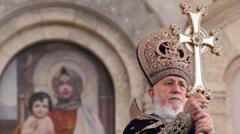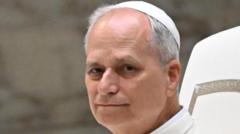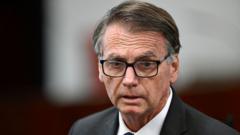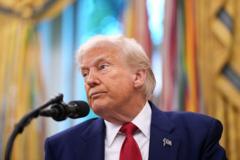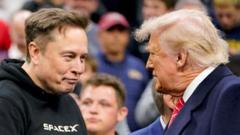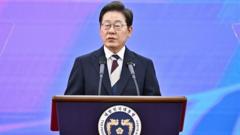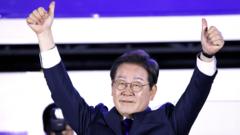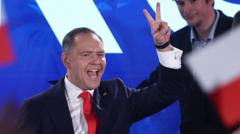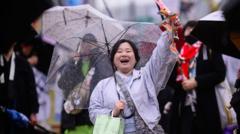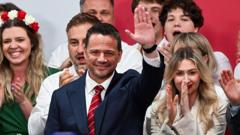The papal conclave, now in its second day, remains unresolved as cardinals face the complexities of selecting a new pope among a diverse group while managing past issues within the Church.**
Vatican Conclave Enters Second Day of Voting for New Pope**

Vatican Conclave Enters Second Day of Voting for New Pope**
133 secretive cardinals reconvene as the Holy See seeks a successor to Pope Francis amidst financial strains and sexual abuse scandals.**
The Vatican's conclave is now into its second day as 133 cardinal electors gather in the Sistine Chapel to choose a successor to Pope Francis following his death in April. The initial vote on Wednesday failed to yield a new pontiff, prompting the cardinals to continue their deliberations in strict secrecy — devoid of phones or internet access — in hopes of reaching a two-thirds majority agreement.
The limited information gathered centers around the new dynamics within the College of Cardinals, which comprises many who were appointed by Francis and are meeting for the first time. This fresh mix of faces is expected to influence the selection process, potentially leading to extended discussions and debates as the Church grapples with financial challenges and a reckoning over past sexual abuse scandals.
The voting mechanism involves several rounds each day, with the ballots burned after two unsuccessful attempts. The smoke signals rising from the Sistine Chapel will indicate whether progress has been made: black smoke for continued negotiations, white smoke if a new pope has been elected.
As the Catholic community watches on, speculations abound regarding potential successors. Cardinal Pietro Parolin, who served as Francis' deputy, and Cardinal Luis Antonio Tagle from the Philippines are frequently mentioned as strong contenders. Additionally, the outcome of this election is perceived by many as a referendum on whether the next pope will maintain the inclusive approach of Francisco or redirect the Church towards conservative values.
For now, the cardinals will resume voting on Thursday morning, with four rounds scheduled throughout the day. The first vote will occur at approximately 10:30 a.m. local time, followed by subsequent votes based on the outcome of earlier rounds. While timelines for the conclave remain unpredictable, history shows that the path to papal selection can range from mere hours to extended periods.
This conclave stands out not only for its size and the array of participants but for the substantial stakes involved as it shapes the future direction of one of the world's oldest and largest institutions. Speculation around how long the election may last varies among cardinals, with some believing the unfamiliarity among them could prolong discussions, while others suggest that a consensus may emerge relatively quickly.
The limited information gathered centers around the new dynamics within the College of Cardinals, which comprises many who were appointed by Francis and are meeting for the first time. This fresh mix of faces is expected to influence the selection process, potentially leading to extended discussions and debates as the Church grapples with financial challenges and a reckoning over past sexual abuse scandals.
The voting mechanism involves several rounds each day, with the ballots burned after two unsuccessful attempts. The smoke signals rising from the Sistine Chapel will indicate whether progress has been made: black smoke for continued negotiations, white smoke if a new pope has been elected.
As the Catholic community watches on, speculations abound regarding potential successors. Cardinal Pietro Parolin, who served as Francis' deputy, and Cardinal Luis Antonio Tagle from the Philippines are frequently mentioned as strong contenders. Additionally, the outcome of this election is perceived by many as a referendum on whether the next pope will maintain the inclusive approach of Francisco or redirect the Church towards conservative values.
For now, the cardinals will resume voting on Thursday morning, with four rounds scheduled throughout the day. The first vote will occur at approximately 10:30 a.m. local time, followed by subsequent votes based on the outcome of earlier rounds. While timelines for the conclave remain unpredictable, history shows that the path to papal selection can range from mere hours to extended periods.
This conclave stands out not only for its size and the array of participants but for the substantial stakes involved as it shapes the future direction of one of the world's oldest and largest institutions. Speculation around how long the election may last varies among cardinals, with some believing the unfamiliarity among them could prolong discussions, while others suggest that a consensus may emerge relatively quickly.


